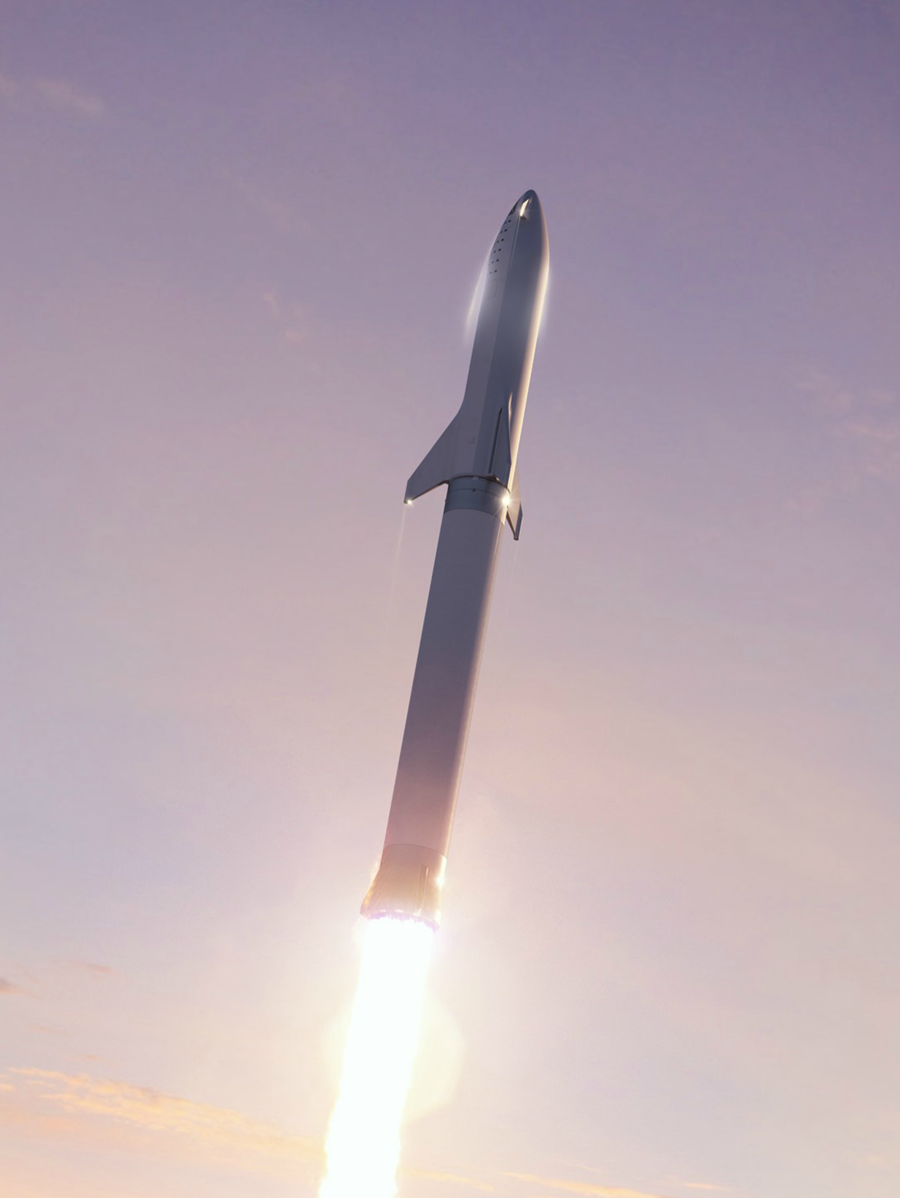SpaceX Changes Design Of Mars-bound Starship - Part 2 of 3 Parts
SpaceX Starship - on booster.png

Part 2 of 3 Parts (Please read Part 1)
Musk decided to replace the ceramic tiles used in current spacecraft with his new cooling system to reduce the weight of the craft. In addition, if the craft were to lose tiles when it landed on Mars, it would be very difficult to replace them for the return flight to Earth. In place of the tiles, Musk intends to perforate the skin of the Starship with tiny holes which will sweat rocket fuel to carry the heat away from the hull during reentry.
Musk said, “On the windward side, what I want to do is have the first-ever regenerative heat shield. A double-walled stainless shell — like a stainless-steel sandwich. You flow either fuel or water in between the sandwich layer, and then you have micro-perforations on the outside — very tiny perforations — and you essentially bleed water, or you could bleed fuel, through the micro-perforations on the outside. You wouldn't see them unless you got up close.”
“Transpirational” thermal protection has been around for decades but it has never been used on a spacecraft. In 1965, NASA filed a patent to use the urine of astronauts to cool the bottom of a space capsule to protect it on reentry. During 2006, NASA carried out research on the possibility of using an inflatable, transpiration-cooled heat shield to protect a spacecraft landing on Mars.
In 1976, The U.S. Department of Defense (DoD) tested a transpiration-cooled nose tip for reentry vehicles containing nuclear warhead. They would fly above the atmosphere and come down on targets thousands of miles away. Most of the research done by the DoD on transpirational cooling is still classified but an engineer who has researched the military use of space technology said that a common problem with such systems was blocked holes that reduced the release of the fluids used for cooling.
Walt Engelund is an aerospace space engineer and the director of the Space Technology and Exploration Directorate at NASA Langley. Engelund said, “You can imagine it wouldn't take much to clog something like that, if they were microscopic pores.”
Dwayne Day was an investigator for the loss of the Space Shuttle Columbia. He said in an email, “What if a bird poops on your rocket and it plugs up a few holes, and then when the thing is returning, no coolant comes out of those holes and that section of the vehicle overheats?”
Engelund has talked about problems with clogged coolant systems in tests that he carried out at NASA in their hypersonic wind tunnel. Models are tested in the tunnel in winds up to thousands of miles per hour. Some models that used transpirational cooling disintegrated in the tunnel during tests. Engelund said "I've seen instances where you'll get one clogged channel ... and it will immediately result in burn-throughs. A model will disappear in a hypersonic wind tunnel. It almost vaporizes, there's so much energy and so much heat.”
Please read Part 3